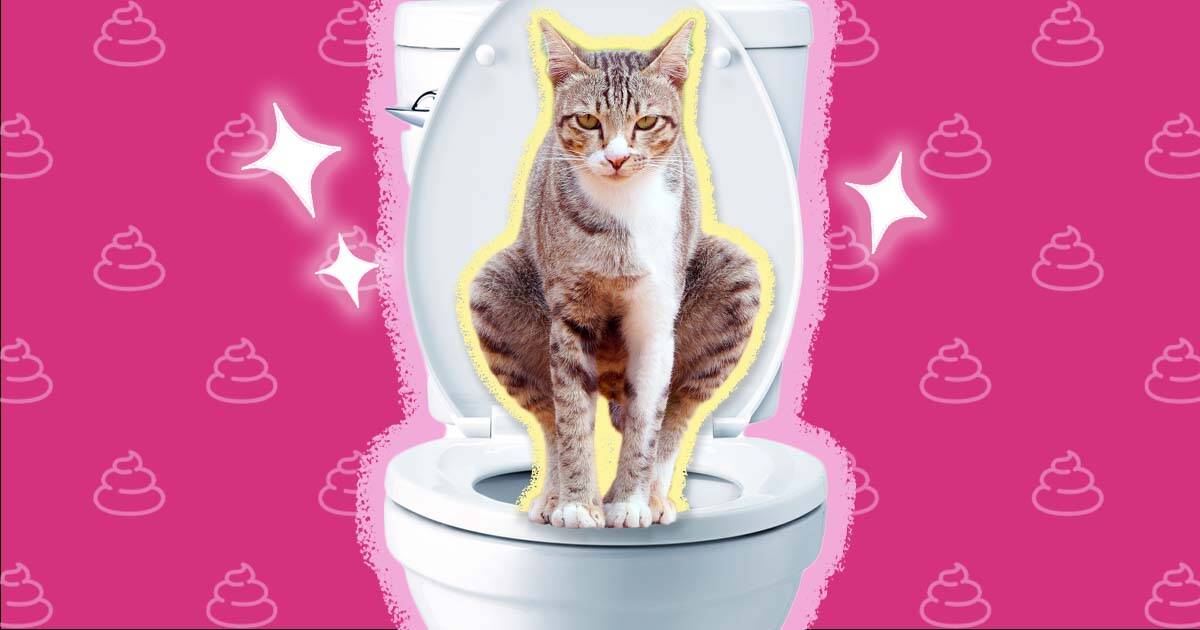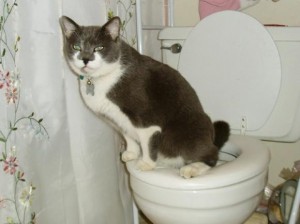Our Consequences of Flushing Animal Waste Down the Toilet
Our Consequences of Flushing Animal Waste Down the Toilet
Blog Article
We have encountered this post on Don't Flush Your Pets Poo Down The Loo, Vet Warns listed below on the net and concluded it made perfect sense to share it with you over here.

When it pertains to disposing of waste, especially animal waste, many people typically turn to the convenient option of flushing it down the bathroom. Nonetheless, this relatively easy solution can have severe repercussions for the atmosphere and public health. In this article, we'll explore why flushing pet waste down the bathroom is a negative concept and give different methods for correct disposal.
Intro
Correct garbage disposal is crucial for keeping ecological sustainability and public health. While it might seem safe to flush animal waste down the toilet, it can result in various concerns, both for the atmosphere and human wellness.
Dangers of flushing pet waste
Ecological effect
Flushing pet waste introduces hazardous germs and microorganisms right into rivers, which can adversely influence water ecosystems. These pathogens can pollute water sources and injury marine life, disrupting fragile ecological communities.
Public health problems
Animal waste contains harmful germs such as E. coli and Salmonella, which can posture major health risks to people. Purging animal waste down the toilet can pollute water supplies, bring about the spread of illness and infections.
Alternatives to flushing
Instead of purging animal waste down the commode, there are several alternative disposal approaches that are much more environmentally friendly and hygienic.
Composting
Composting pet waste is an environment-friendly means to deal with it. By composting, raw material is broken down right into nutrient-rich soil, which can be utilized to fertilize yards and plants.
Garbage dump disposal
Taking care of animal waste in a garbage dump is an additional option. While not as environmentally friendly as composting, it is a more secure alternative to flushing, as it protects against the contamination of water resources.
Pet garbage disposal systems
There are customized pet waste disposal systems available that safely and hygienically take care of animal waste. These systems often use enzymes to break down waste and eliminate odors.
Steps to proper animal waste disposal
To ensure proper disposal of pet waste, comply with these steps:
Scooping and nabbing waste
On a regular basis scoop and bag pet waste utilizing naturally degradable bags. This avoids waste from contaminating the environment.
Utilizing assigned waste bins
Dispose of bagged animal waste in marked waste bins, such as garden compost bins or garbage dump bins. get more info Prevent flushing it down the toilet in all prices.
Cleansing can and pet dog locations routinely
Regularly tidy can and animal areas to stop the accumulation of waste and microorganisms. Use pet-safe cleaning items to keep hygiene.
Benefits of appropriate disposal approaches
Taking on correct disposal methods for animal waste provides a number of benefits:
Minimized environmental pollution
Correct disposal approaches reduce the risk of environmental pollution, safeguarding waterways and communities from contamination
Reduced risk of water contamination.
By avoiding flushing animal waste down the commode, the risk of water contamination is significantly reduced, safeguarding public health.
Improved hygiene and health
Correct disposal techniques promote better hygiene and hygiene, developing a more secure environment for both humans and pets.
Conclusion
To conclude, purging animal waste down the commode is unsafe to the environment and public health. By embracing alternative disposal approaches and complying with appropriate waste administration practices, we can lessen the adverse effect of pet waste and add to a cleaner, healthier world.
What To Do With Dog Poo – The Do's And Don'ts Of Disposing Of Faeces
Dog poo bins
Some councils provide dedicated dog waste bins in popular dog-walking areas that can take dog poo that has been bagged but you can legally dispose of dog waste in any public litter bin, as long as it is securely bagged. This also applies to your wheelie bin at home.
Do not flush
Water companies do not recommend flushing dog faeces down the toilet because certain parasites can survive the water processing treatment and are potentially harmful to humans. You should also never consider flushing dog poo that has been bagged down the toilet as the bags will not break down and instead create severe blockages in the sewage system.
In the woods
The Forestry Commission promotes a ‘stick and flick’ method for dealing with waste in the woods. This means finding a stick and using it to flick any poo from off the path so that it is out of the way of other walkers. You could also bury it as long as it is not in an area where there might be livestock.
Livestock
Parasites found in dog poo can be transmitted to livestock if they inadvertently eat infected faeces that has been left on grazing land. This could result in the death of sheep or abortion in cattle so you should always make sure you pick up your dog’s waste in fields where livestock could be present.

Regularly tidy can and animal areas to stop the accumulation of waste and microorganisms. Use pet-safe cleaning items to keep hygiene.
Benefits of appropriate disposal approaches
Taking on correct disposal methods for animal waste provides a number of benefits:
Minimized environmental pollution
Correct disposal approaches reduce the risk of environmental pollution, safeguarding waterways and communities from contamination
Reduced risk of water contamination.
By avoiding flushing animal waste down the commode, the risk of water contamination is significantly reduced, safeguarding public health.
Improved hygiene and health
Correct disposal techniques promote better hygiene and hygiene, developing a more secure environment for both humans and pets.
Conclusion
To conclude, purging animal waste down the commode is unsafe to the environment and public health. By embracing alternative disposal approaches and complying with appropriate waste administration practices, we can lessen the adverse effect of pet waste and add to a cleaner, healthier world.
What To Do With Dog Poo – The Do's And Don'ts Of Disposing Of Faeces
Dog poo bins
Some councils provide dedicated dog waste bins in popular dog-walking areas that can take dog poo that has been bagged but you can legally dispose of dog waste in any public litter bin, as long as it is securely bagged. This also applies to your wheelie bin at home.
Do not flush
Water companies do not recommend flushing dog faeces down the toilet because certain parasites can survive the water processing treatment and are potentially harmful to humans. You should also never consider flushing dog poo that has been bagged down the toilet as the bags will not break down and instead create severe blockages in the sewage system.
In the woods
The Forestry Commission promotes a ‘stick and flick’ method for dealing with waste in the woods. This means finding a stick and using it to flick any poo from off the path so that it is out of the way of other walkers. You could also bury it as long as it is not in an area where there might be livestock.
Livestock
Parasites found in dog poo can be transmitted to livestock if they inadvertently eat infected faeces that has been left on grazing land. This could result in the death of sheep or abortion in cattle so you should always make sure you pick up your dog’s waste in fields where livestock could be present.

Hopefully you enjoyed our article on . Thanks a ton for taking the time to read our article post. Enjoyed reading our posting? Please quickly share it. Help other people find it. Thank you so much for taking the time to read it.
Call Today Report this page